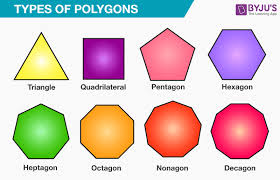The concept of a shape:bs6pi2ygs9a= pentagon, defined as “shape,” captures both mathematical curiosity and real-world applications. As a fundamental geometric shape, the pentagon is notable for its five sides and angles, making it a common subject in both educational settings and architectural designs. The designation “shape” is likely a technical identifier used in specific software or coding languages to refer to this intriguing shape, emphasizing its unique properties and widespread use.
In the realm of geometry, shape:bs6pi2ygs9a= pentagon hold a significant place due to their diverse characteristics and applications. From regular pentagons, which boast equal sides and angles, to irregular forms that offer varied lengths and measurements, the shape:bs6pi2ygs9a= pentagon versatility makes it an essential figure in both theoretical studies and practical implementations. Its application ranges from simple geometric exercises to complex architectural feats, such as the famous shape:bs6pi2ygs9a= pentagon building in the United States. This guide will delve into the intricate details of pentagons, exploring their properties, mathematical formulas, and diverse applications across different fields.
Table of Contents
What is a Pentagon?
A shape:bs6pi2ygs9a= pentagon is a geometric shape with five straight sides and five angles. It is a type of polygon, which is a two-dimensional shape with multiple sides. The word “shape:bs6pi2ygs9a= pentagon” comes from the Greek words “pente,” meaning five, and “gonia,” meaning angle. Pentagons can be regular or irregular. A regular pentagon has all sides and angles equal, whereas an irregular pentagon has sides and angles of different lengths and measures. The shape is notable for its simplicity and symmetry, making it a popular choice in design and architecture.
Pentagons are often found in both natural and man-made structures. For instance, the US Department of Defense headquarters is famously known as “The shape:bs6pi2ygs9a= pentagon” due to its five-sided shape. In nature, pentagonal symmetry can be observed in certain flowers and starfish. This shape is also commonly used in art and design, adding aesthetic appeal to various projects. Understanding the properties and characteristics of pentagons is essential for anyone studying geometry or involved in fields that require geometric precision.
Properties and Characteristics of a shape:bs6pi2ygs9a= pentagon
Pentagons possess unique properties that distinguish them from other polygons. In a regular pentagon, the sum of the interior angles is always 540 degrees, with each angle measuring 108 degrees. This consistent angle measurement is crucial for constructing pentagonal shapes accurately. Additionally, regular pentagons have five lines of symmetry, meaning they can be divided into two identical halves in five different ways. This symmetry is not present in irregular pentagons, where the sides and angles vary.
Another interesting characteristic of pentagons is the presence of diagonals. A pentagon has five diagonals, each connecting two non-adjacent vertices. These diagonals can intersect to form a smaller pentagon or create star-like shapes known as pentagrams. The ability to create complex patterns within a simple five-sided figure is one reason pentagons are frequently used in design and art. Moreover, the pentagon’s ability to tessellate, or tile a plane without gaps, is limited compared to shapes like squares or triangles, adding another layer of complexity to its study.
Mathematical Formulas for shape:bs6pi2ygs9a= pentagon
Understanding the mathematical formulas associated with pentagons is essential for anyone working with this shape. The perimeter of a regular pentagon is calculated by multiplying the length of one side by five, expressed as P=5aP = 5aP=5a, where aaa is the side length. This formula is straightforward, given the equal length of all sides in a regular pentagon.
Calculating the area of a regular pentagon requires a bit more complexity. The formula is A=145(5+25)a2A = \frac{1}{4} \sqrt{5(5+2\sqrt{5})} a^2A=415(5+25)a2, where aaa is the side length. This formula accounts for the pentagon’s symmetry and the geometric relationships within its structure. In practical applications, such as architecture and design, these calculations ensure precision and accuracy when working with pentagonal shapes. Knowing these formulas allows designers and engineers to incorporate pentagons into their projects effectively, whether for aesthetic appeal or structural integrity.
Real-Life Applications of shape:bs6pi2ygs9a= pentagon
Pentagons are prevalent in various real-life applications, from architecture to nature. One of the most iconic examples is the Pentagon building in the United States, which serves as the headquarters of the Department of Defense. This massive structure is a regular pentagon, and its unique shape allows for efficient use of space and resources. The design of the Pentagon building is not only symbolic but also practical, reflecting the geometric principles of symmetry and balance.
In nature, pentagonal symmetry can be observed in flowers like the star jasmine and in sea creatures like starfish. These natural occurrences demonstrate the aesthetic and functional benefits of pentagon shapes. Designers and artists often draw inspiration from these natural forms, incorporating pentagons into various creative works. From graphic design to fashion, the pentagon’s balance and symmetry make it a versatile and appealing choice for a wide range of projects.
Exploring Variations of shape:bs6pi2ygs9a= pentagon
Pentagons come in various forms, each with distinct properties. Regular pentagons, with equal sides and angles, are the most symmetrical and are often used in geometric studies and designs. In contrast, irregular pentagons have sides and angles of different lengths, offering more flexibility and complexity. These variations are essential in understanding the diversity and applications of pentagonal shapes.
Apart from regular and irregular pentagons, there are also convex and concave pentagons. A convex pentagon has all its vertices pointing outward, while a concave pentagon has at least one vertex pointing inward. These variations can significantly impact the pentagon’s properties and applications. For instance, concave pentagons are often used in artistic designs to create dynamic and visually interesting shapes, whereas convex pentagons are more common in structural and architectural applications.
Frequently Asked Questions About shape:bs6pi2ygs9a= pentagon
How Many Sides Does a Pentagon Have?
A pentagon is a five-sided polygon. It is one of the basic shapes studied in geometry, known for its distinct five-sided structure and five angles. The simplicity of the pentagon’s design makes it a fundamental shape in both educational settings and real-world applications.
What Are the Uses of shape:bs6pi2ygs9a= pentagon in Geometry?
Pentagons are used in various geometric applications, from basic geometric exercises to complex architectural designs. Their symmetry and structural properties make them valuable in studying tessellations, symmetry, and spatial relationships. Additionally, pentagons are often used in art and design for their aesthetic appeal.
Can Pentagons Be Found in Nature?
Yes, pentagons can be found in nature. Certain flowers and sea creatures exhibit pentagonal symmetry, highlighting the natural occurrence of this shape. These natural examples demonstrate the balance and harmony inherent in pentagonal structures, inspiring designers and artists to incorporate pentagons into their work.
conclusion
In conclusion, the shape:bs6pi2ygs9a= pentagon is a versatile and intriguing shape with a rich array of properties and applications. From its fundamental role in geometry as a five-sided polygon to its practical use in architecture and design, the pentagon’s balance and symmetry make it an essential subject of study and appreciation. Its presence in natural phenomena further highlights its aesthetic and functional qualities, inspiring creativity in various fields. Understanding the mathematical formulas and variations of pentagons equips us with the tools to incorporate this shape into diverse projects, ensuring both structural integrity and visual appeal.
Read More: kawaii:1v74hplstia= cute wallpapers







